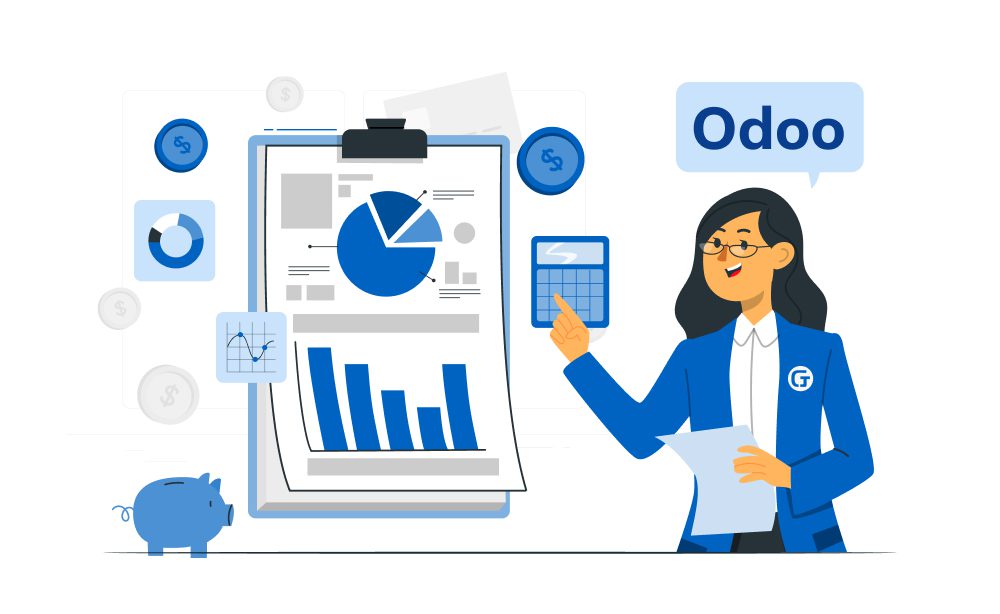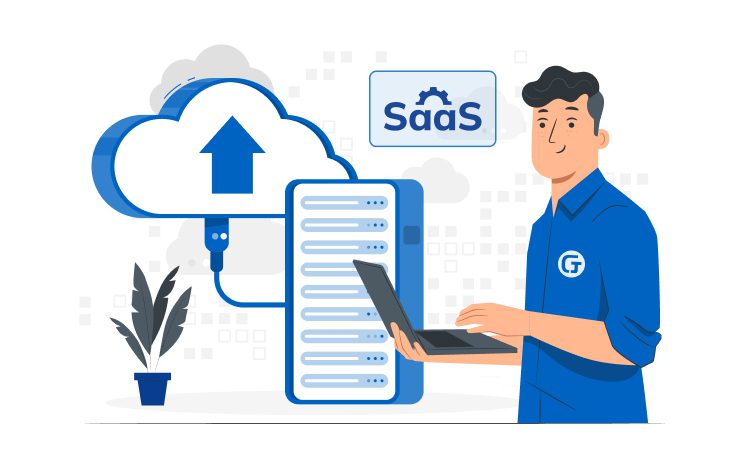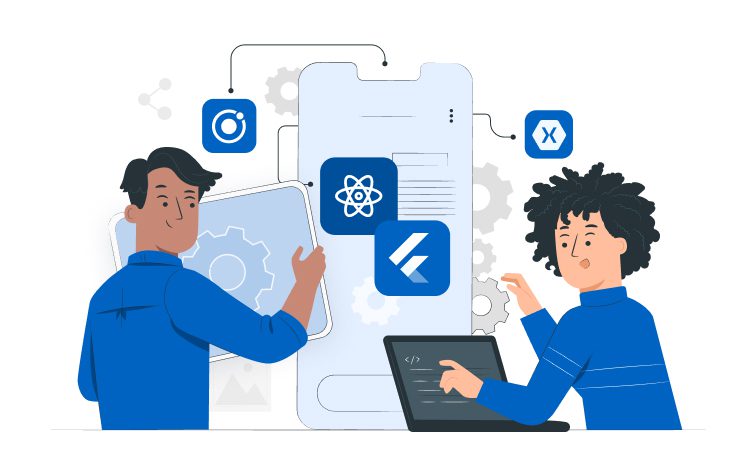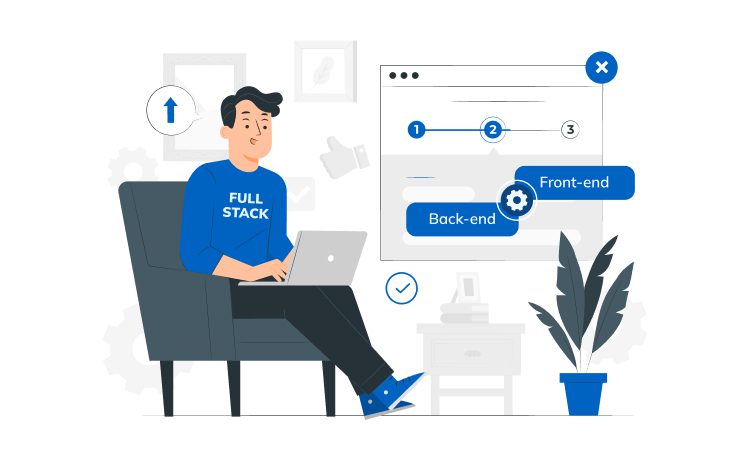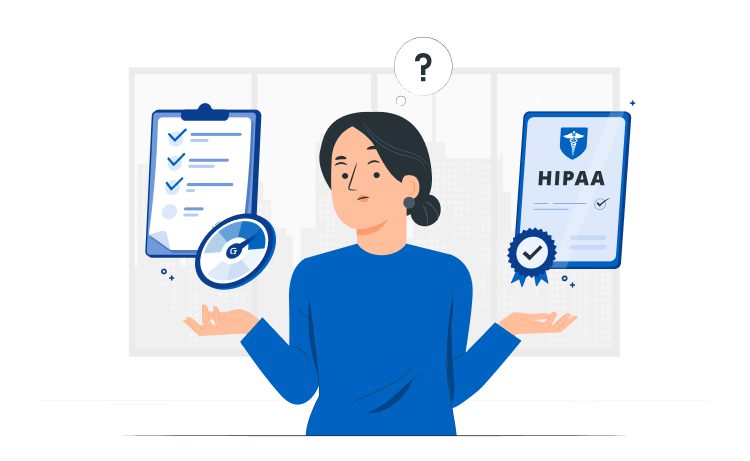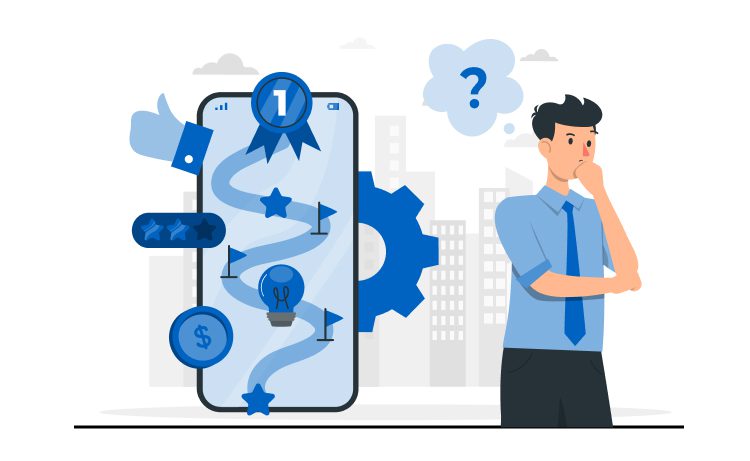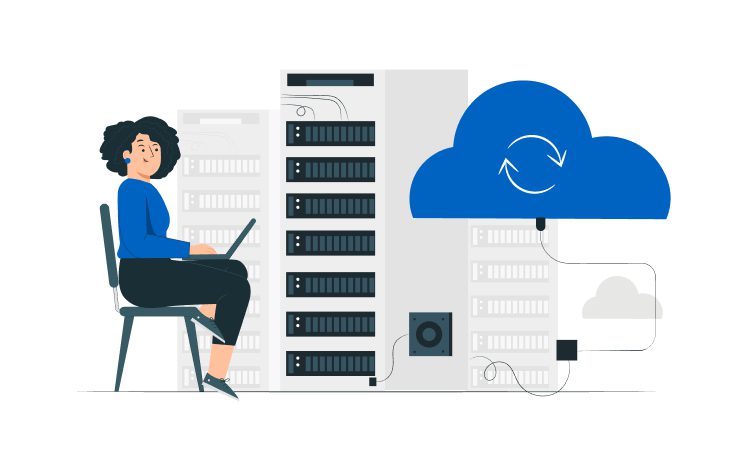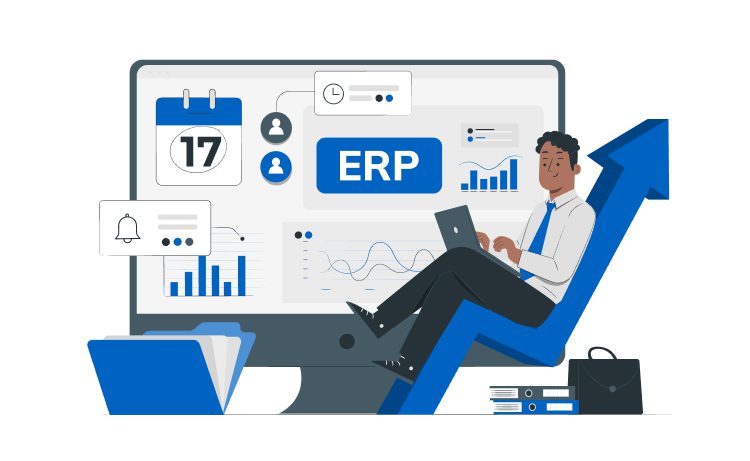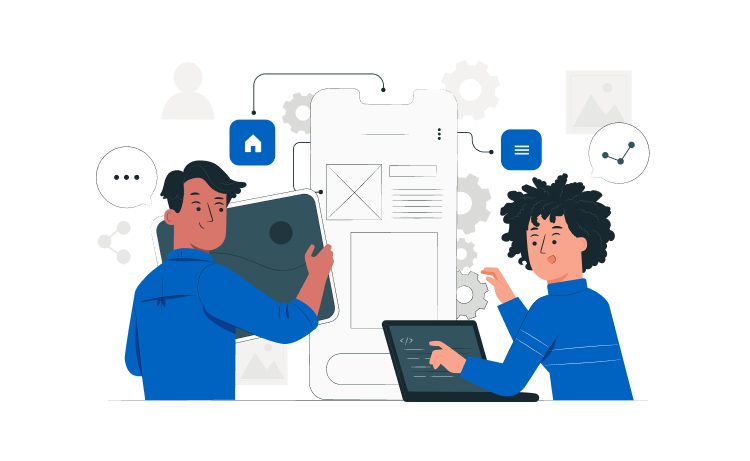
Mobile App Backend Development: A Short Guide



Creating a mobile app’s backend is essential for producing successful mobile applications. The front end of an application is where users interact with the software, whereas the back end is responsible for the data storage, processing, and core business logic. It acts as the app’s central nervous system, giving it power and ensuring it runs efficiently.
At Glorium Technologies, we have mastered mobile app backend development while delivering dozens of successful products, including projects in real estate app development, healthcare app development, fintech app development, and many other domains.
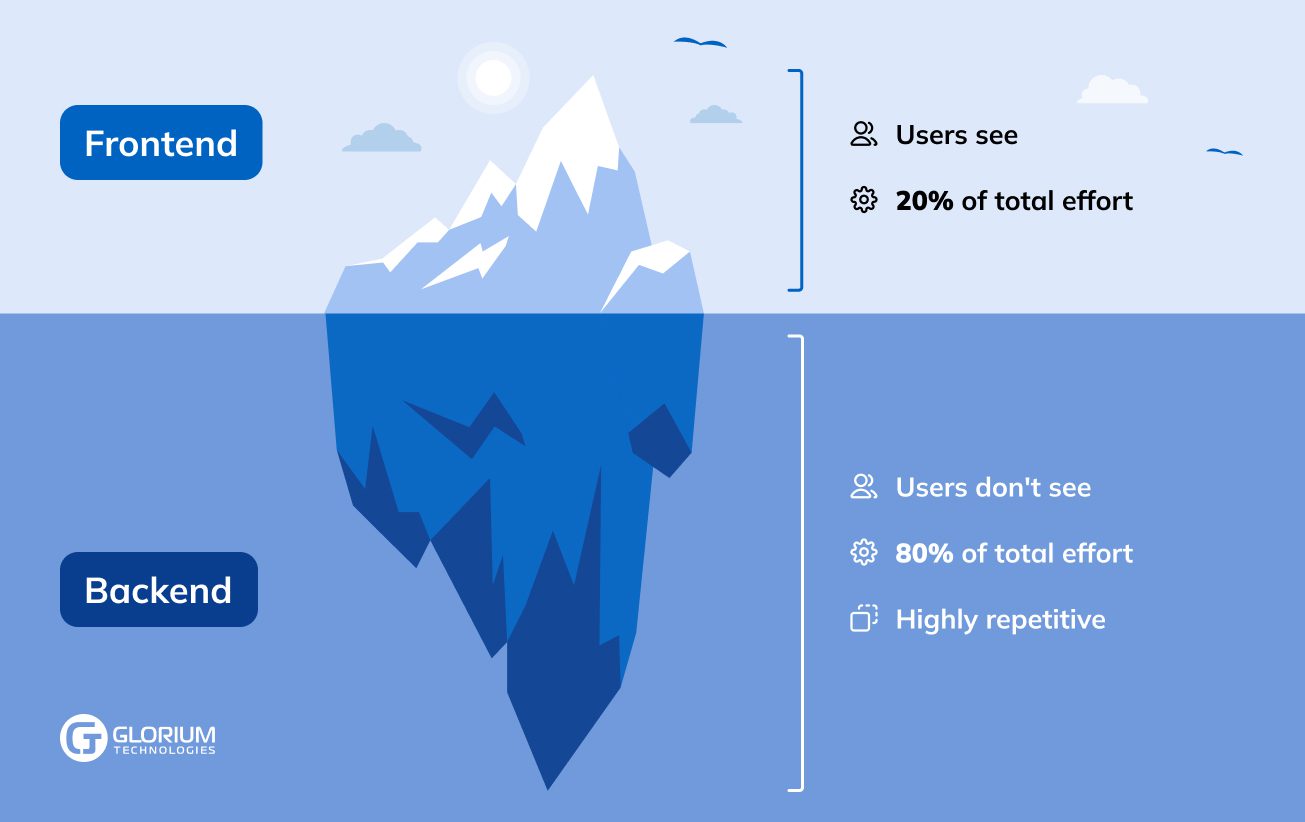
In this guide, we will investigate the “who’s who” of backend development in mobile apps and give an overview of the top backend SaaS solutions on the market.
Content
Mobile app backend development gets done by app developers as a part of the mobile app development services. Mobile backend may primarily be approached from two different angles:
This strategy for the backend solutions entails using programming languages such as Java, Python, or Ruby to construct a custom backend for all mobile app functions, which is then hosted on mobile app server, cloud servers, or cloud platforms.
This kind of app and backend software stack needs a significant amount of time and money to be developed, despite offering the highest level of control and adaptability.
Though it has challenges, traditional mobile app backend development remains a preferred choice for applications with complex business logic and unique mobile app functionalities, where fine-tuning the mobile backend is critical for optimal performance and scalability.
BaaS is a cloud-based service that provides pre-built features and functions as application programming interfaces (APIs). This software as a service makes mobile app backend development simpler. It gives mobile app development companies the ability to concentrate on the user experience and the frontend development of the application, leaving the management of the mobile backend solution to the BaaS provider.
This mobile app backend development strategy is efficient concerning both time and money, making it especially beneficial for startup software development and small businesses with scarce resources, as it reduces web apps development time and costs.
Additionally, BaaS robust backend solutions are scalable and handle backend servers maintenance, security, and updates, freeing backend developers and app owners from managing these aspects.
| Difference | BaaS | Custom Backend |
| Cost | Lower at the start of the development process; may go higher with added functionality and scaling. | Often more expensive than BaaS, yet on the beginning only. |
| Speed | Fast and smooth app development. | Takes more time than BaaS. |
| Reliability | Depends on the development platform. | Highly reliable; doesn’t depend on the platform. |
| Security | Depends on the development platform. | Highly secure, especially when based on the local servers. |
| Scalability | Limited customization; scaling can be challenging and costly. | Highly customizable and scalable. |
When deciding between BaaS and a custom backend, evaluate your project’s complexity, scalability needs, and development resources to determine the best-fit solution for your project.
The following is a typical list of the essential components that make up a mobile app backend:
The server performs as the application’s core processing unit and is responsible for taking requests from the app’s frontend, processing data, and delivering replies. It acts as the central hub for storing data and managing it, as well as handling authentication and security protocols.
Besides, the server facilitates communication between the app and any external APIs or third-party services that may be required for certain functionalities of the mobile apps.
The database stores all the user data, content, and other information necessary for the app to work correctly. It allows for efficient data storage, retrieval, and manipulation, ensuring that the mobile application can quickly access and process the necessary information. The database also plays a major role in maintaining data integrity and providing a scalable solution for handling large amounts of user data as the mobile apps grow.
APIs facilitate connections between the mobile app and the backend server, allowing for data flow without any interruptions. This seamless communication between the app and the server ensures that users can interact with the app in real time and receive up-to-date information smoothly. Additionally, APIs enable developers to integrate various third-party services and functionalities into the app, enhancing its capabilities and user experience.
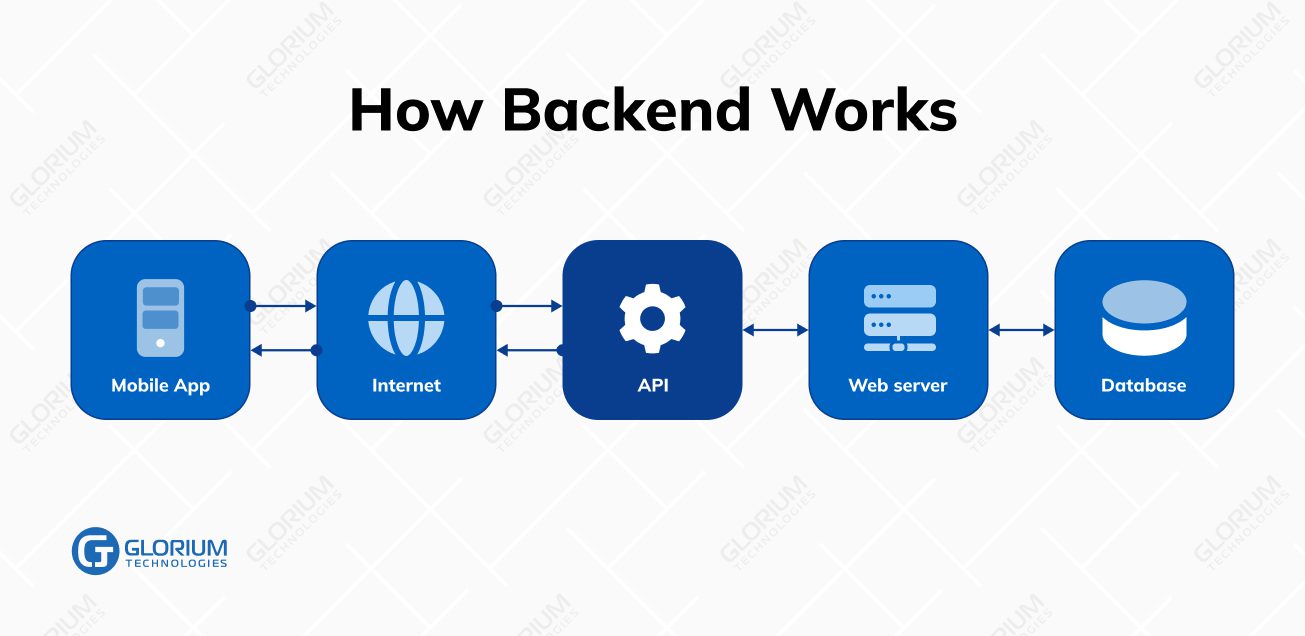
All in all, the backend of mobile apps operates as the behind-the-scenes engine, encompassing servers that process data, databases storing crucial information, and APIs facilitating seamless communication between the graphical user interface and underlying functionalities.
A mobile app’s backend must have a variety of features in addition to its fundamental component. These features are numerous, yet the basic set may include the following:
The app’s backend facilitates push notifications designed to keep users updated and engaged with the app. By using these notifications strategically, app developers can enhance user retention, encourage app usage, and drive user actions, ultimately improving the overall user experience.
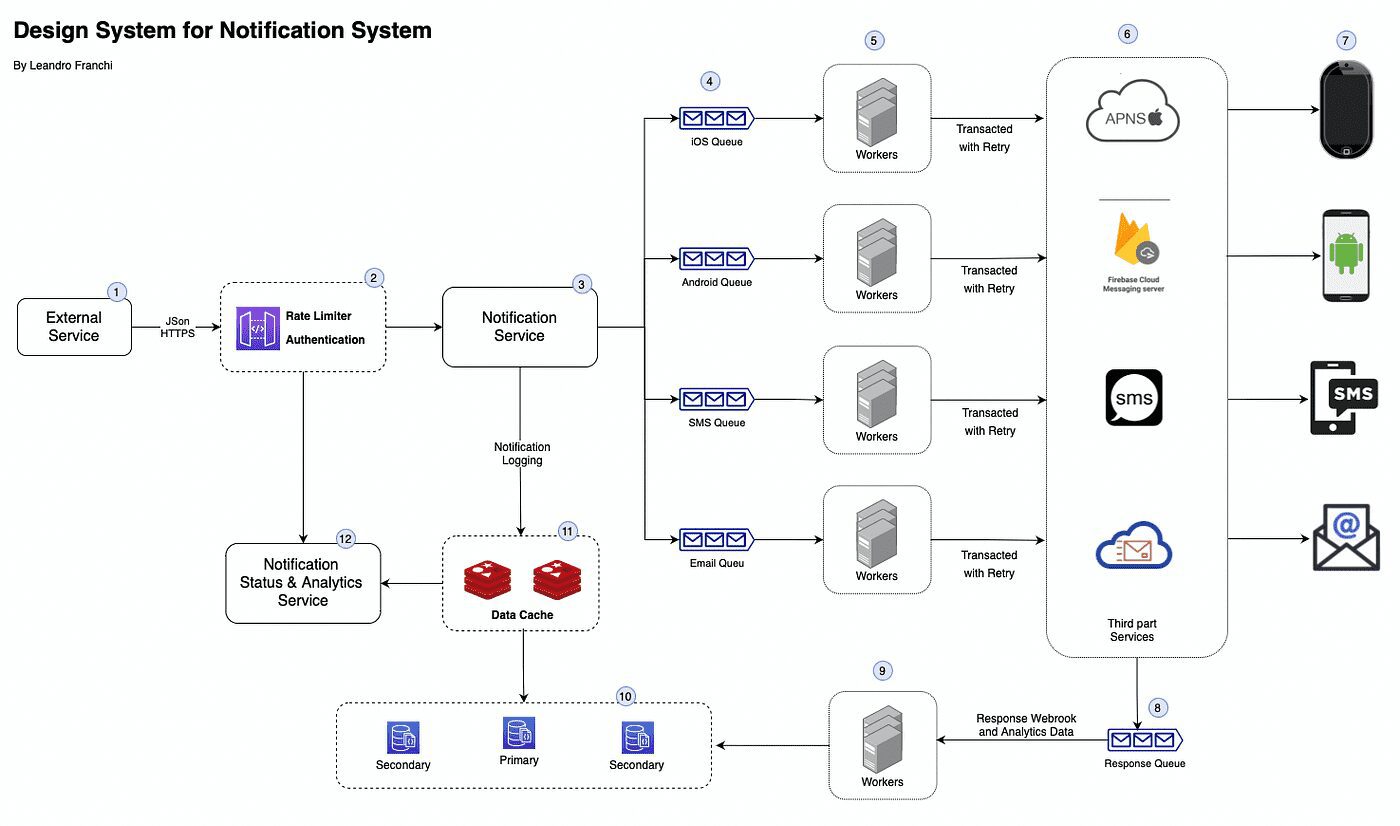
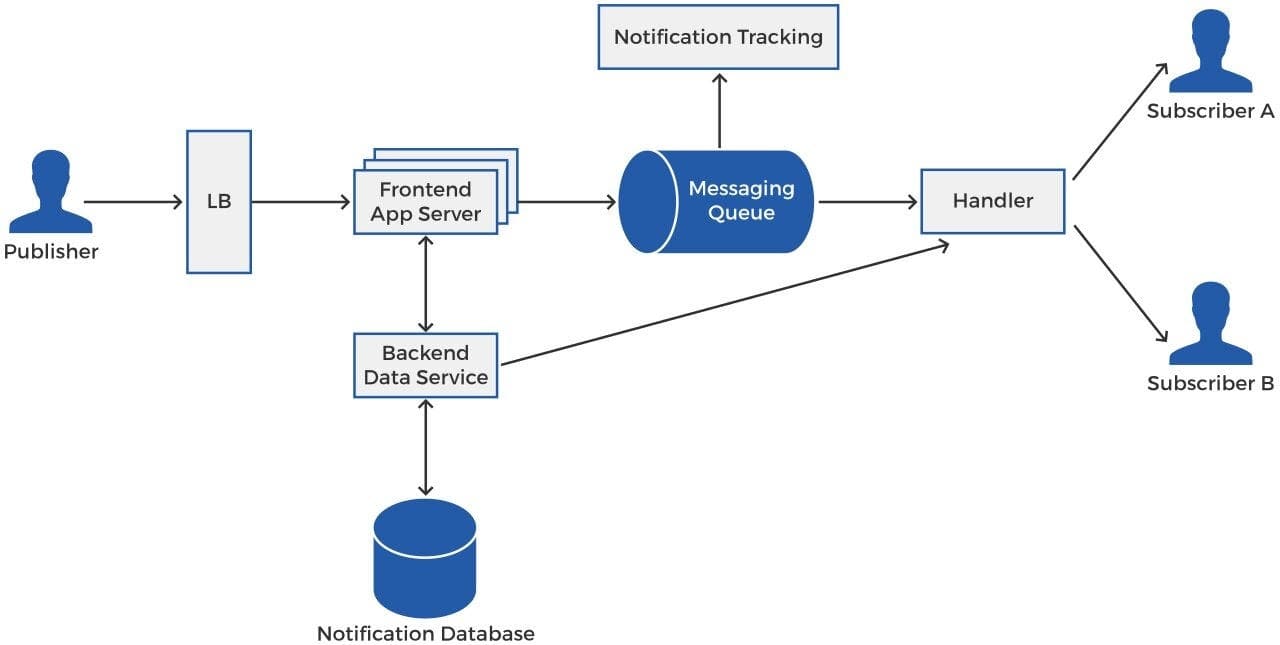
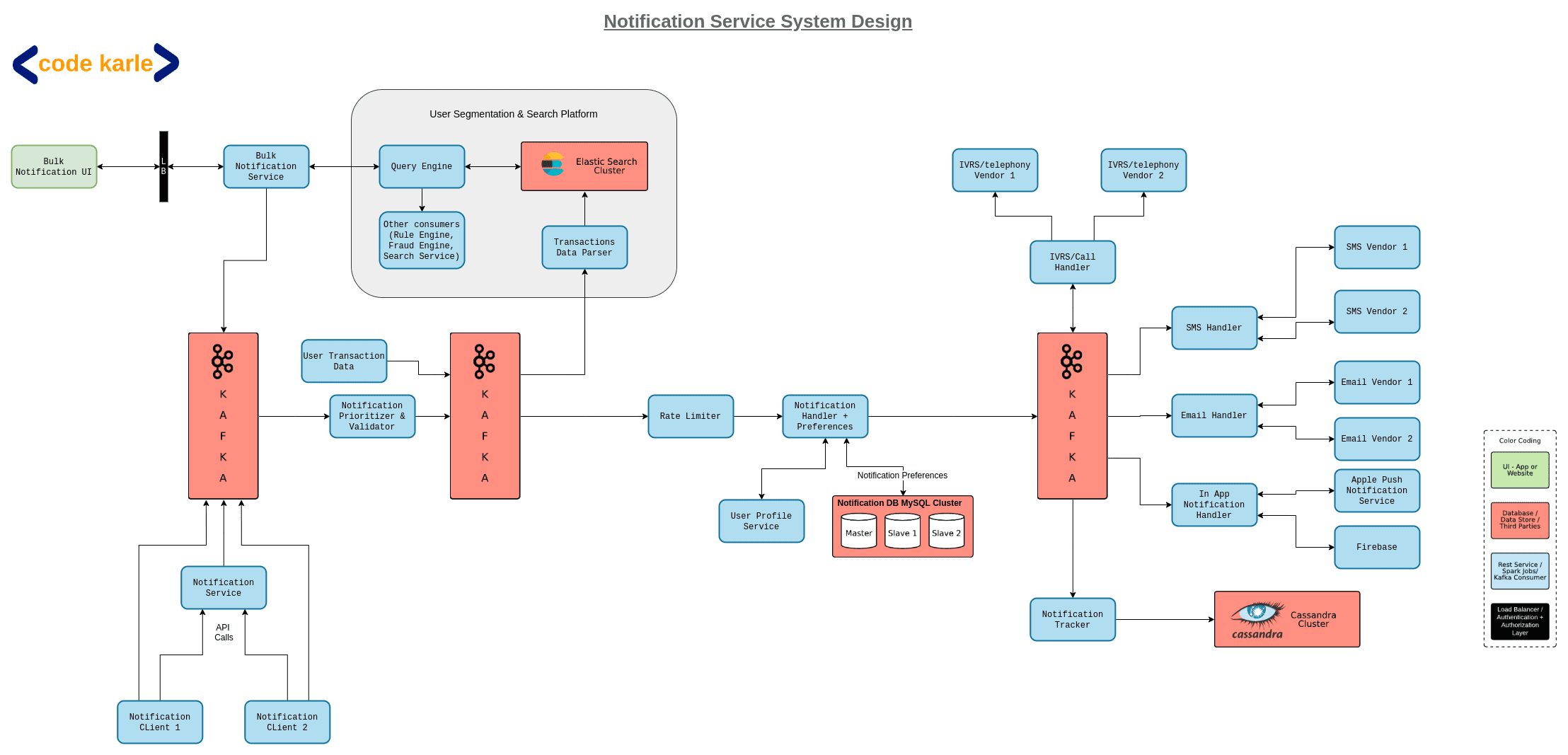
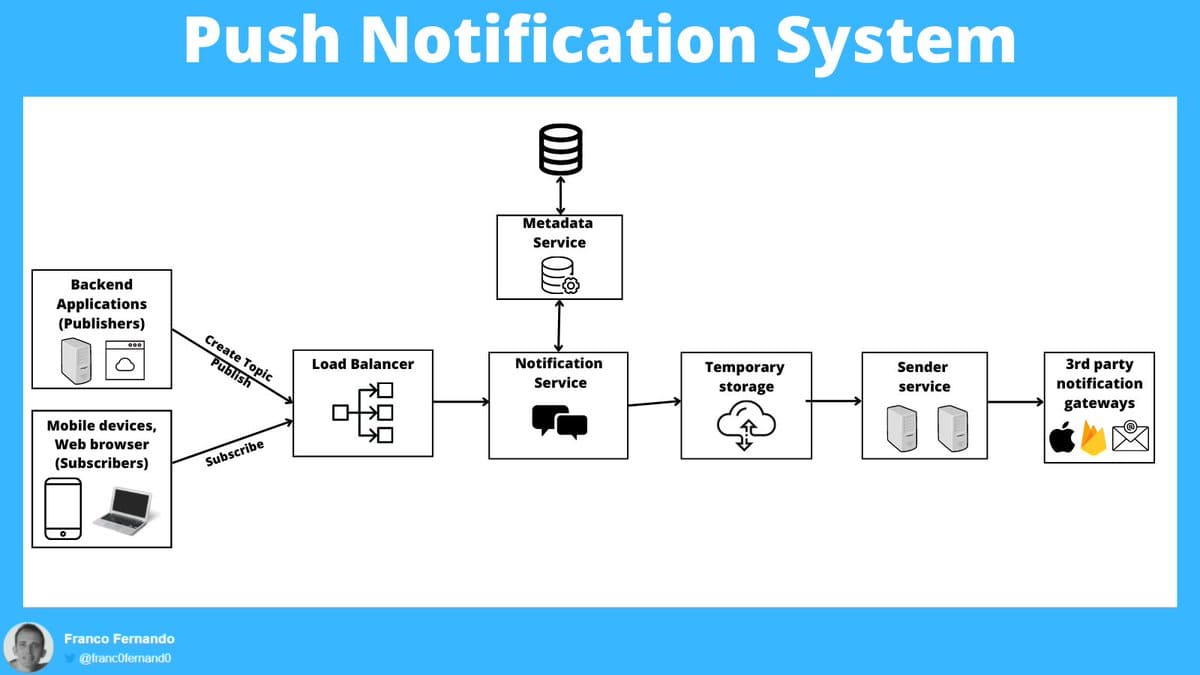
However, it is essential to judiciously employ push notifications, as excessive or irrelevant heads-ups can lead to annoyance and app uninstalls. The backend needs to allow users to customize their notification preferences and implement smart targeting to ensure that users receive relevant and timely notifications.
Safe user authentication and authorization are essential to a comprehensive user data protection and privacy protection strategy. The backend employs various authentication mechanisms, such as username-password authentication, social media logins, multi-factor authentication, or biometric authentication.
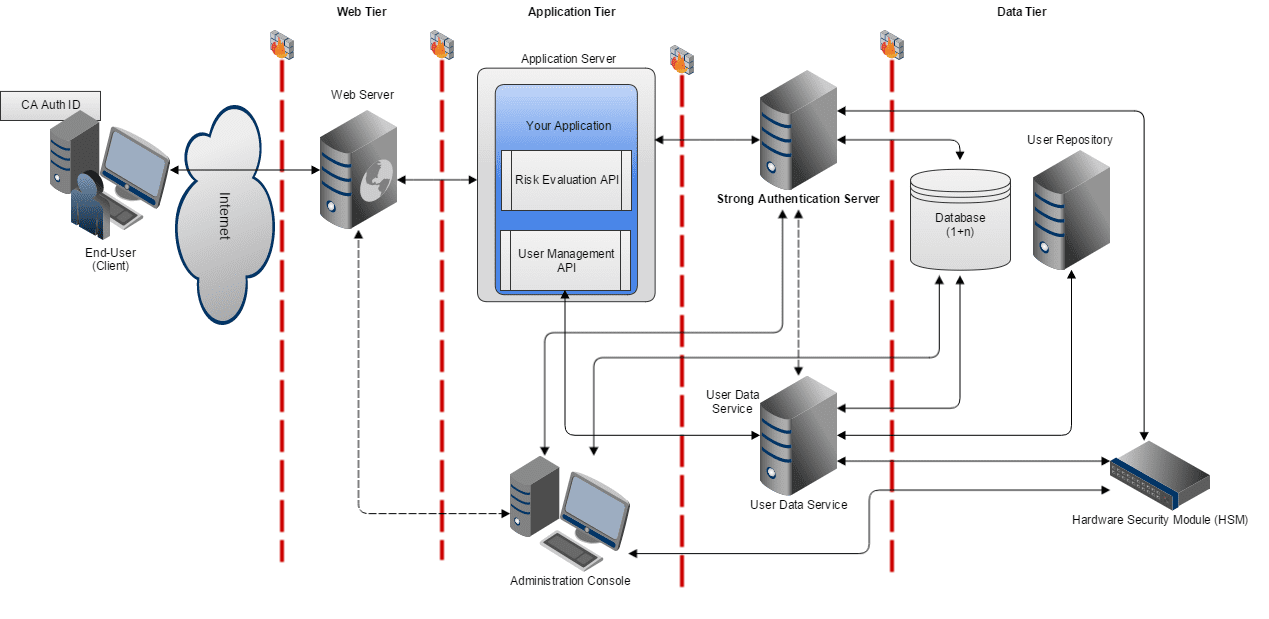
By implementing strong authentication measures, the backend ensures only authorized users can access their accounts. Meanwhile, user authorization determines the level of access granted to authenticated users. For instance, administrators may have higher privileges compared to regular users.
For applications that handle transactions, integrating a payment gateway into the backend mobile app development is necessary to ensure that payments are safe and easy. The payment gateway handles sensitive user data, such as credit card details or banking information, by encrypting it during transmission and securely storing it to prevent unauthorized access.
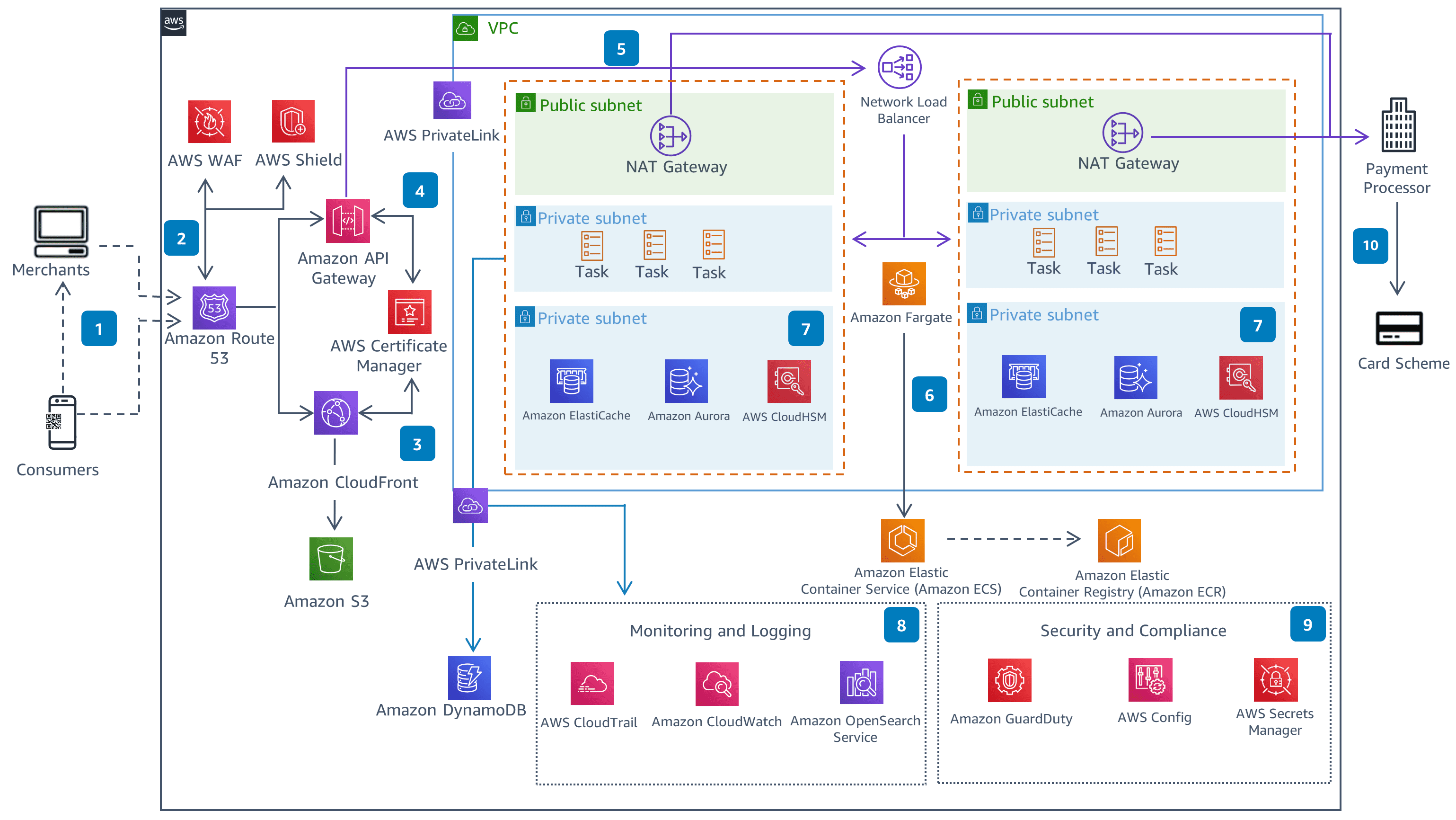 Integrating a payment gateway leads to a better user experience, smoother conversions, and increased trust in the app’s reliability. And by offloading the responsibility of payment processing to the external payment gateway, the app’s backend can focus on other critical tasks.
Integrating a payment gateway leads to a better user experience, smoother conversions, and increased trust in the app’s reliability. And by offloading the responsibility of payment processing to the external payment gateway, the app’s backend can focus on other critical tasks.
Today, the creation of a mobile app backend may be simplified using a variety of tools and technologies. Our top automated platforms for the mobile backend development including the following:
Google’s Firebase is a backend-as-a-service (BaaS) platform that provides various services. These services include real-time data support large databases, user authentication, and cloud functionalities. It also offers a multitude of extensions to automate different apps’ mobile backend processes.
Amplify is an Amazon Web Services (AWS) component offering extensive tools and services for constructing scalable and secure mobile app backends. This software as a service actually provides full-stack functionality so that it will be of use for frontend developers, and backend development pros alike.
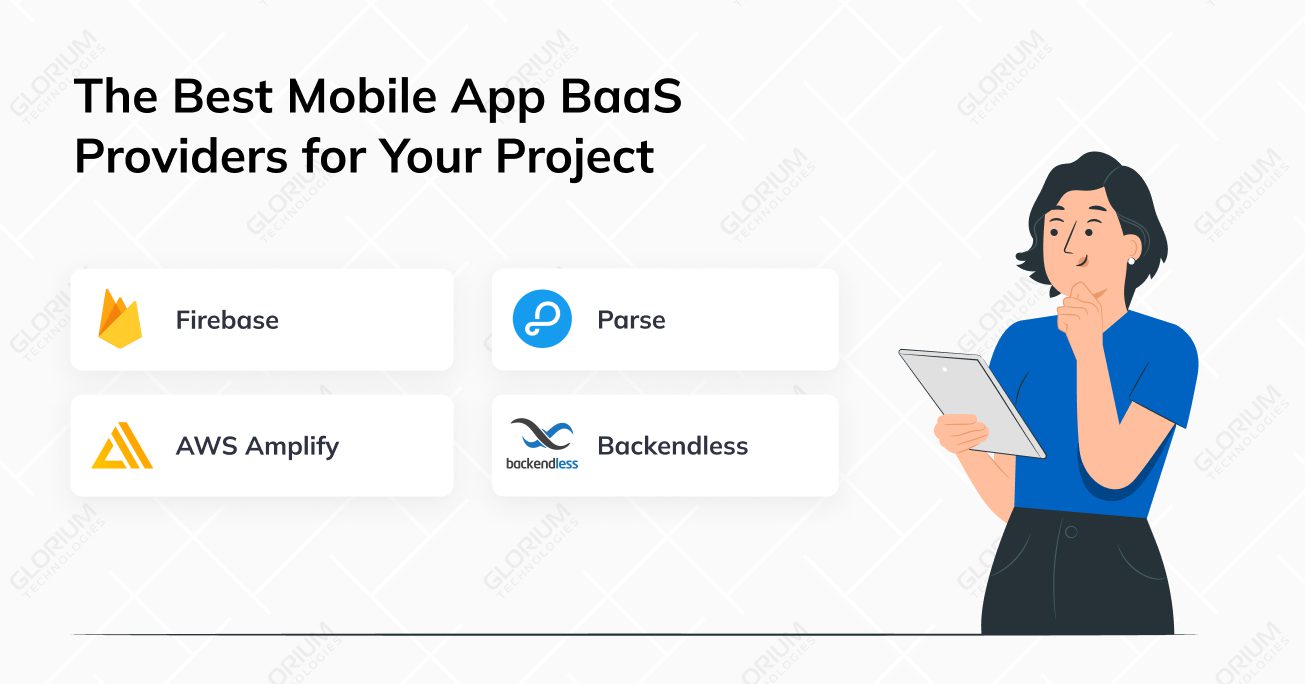
Parse is an open-source backend as a service (BaaS) platform that may be self-hosted. It offers various capabilities, including user authentication, database storage, and file storage. Their comprehensive guides for each platform can help iOS and Android app developers.
Backendless is a BaaS platform that offers ready-to-use APIs for data management, user authentication, and push notifications. Its friendly user interface allows you to build the best backend app solution without coding by adding desired features in a format of codeless logic blocks.
The development of a mobile app’s backend should adhere to certain best practices to maximize the likelihood of it being successful:
The backend for mobile app development should be designed to be able to manage an increasing number of users and data without compromising speed. This can be achieved by implementing a scalable architecture that allows for horizontal scaling, where you add more servers to handle the growing load. Additionally, using caching mechanisms and optimizing database queries can improve the overall performance of the backend system.
Put in place security measures to protect user data and guard against the possibility of security breaches. Implementing robust authentication and authorization mechanisms, such as two-factor authentication and role-based access control, will help.
Regularly updating and patching software, encrypting sensitive data, and conducting regular security audits can further enhance the system’s security.

Ensure that the backend can accept future upgrades and modifications by being as flexible and modular as possible. You can use a microservices architecture, which allows for independent development and deployment of different components. A good practice is to adopt industry-standard protocols and APIs to ensure compatibility with future technologies and systems.
The backend should have regular updates and maintenance to keep it functional and safe. Keeping an eye on all custom code functionalities, critical data, and other backend elements and stepping in as needed can help address any bugs or security vulnerabilities that may arise over time. It is also essential to regularly monitor and optimize the performance of the app’s mobile backend processes to ensure efficient operation and user satisfaction.
In most cases, the backend development goes parallel with the frontend development, and both follow the standard software development cycle. If looked at separately, the backend development process consists of the following stages:
Determine the demands of the app in terms of its requirements, functionality, and backend infrastructure. This stage involves analyzing the target audience, understanding the app’s purpose, and identifying the necessary features and technologies. It is important to consider scalability and security requirements to ensure a robust backend infrastructure that can handle increasing user demands and protect sensitive data over time.
To visualize the app’s architecture and features, you should first create a prototype. A prototype is a preliminary version of the app that gives you a chance to test and refine its functionality and user experience. Wireframing or using prototyping tools are common ways to create interactive mockups.
A prototype allows you to have a hands-on experience with your app idea before you invest in the full-scale making and gather feedback from stakeholders and potential users. It will help you make necessary adjustments before progressing with the backend mobile app development process.
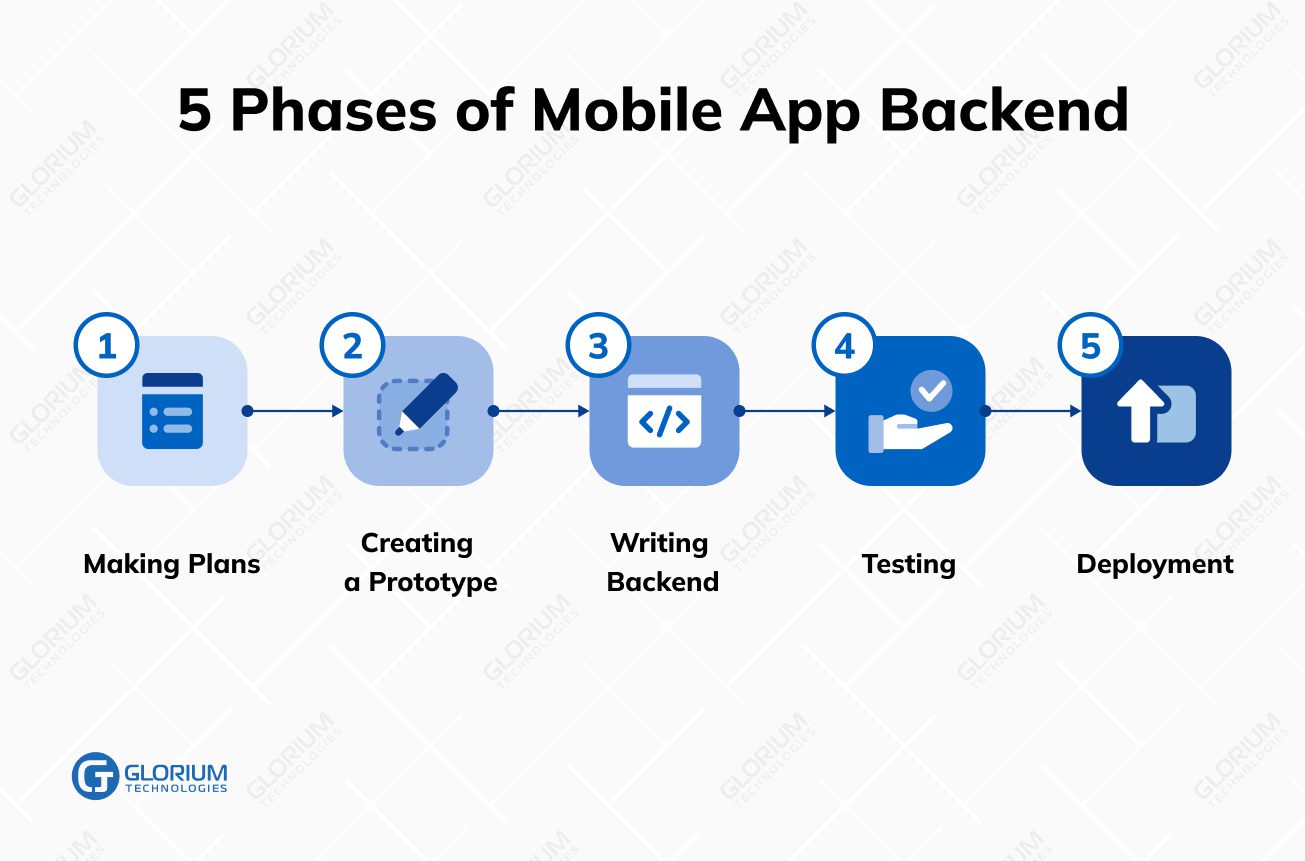
Construct and validate all of the backend components in accordance with the prototype. This includes setting up the server infrastructure, designing and implementing the necessary APIs, and integrating with any external services or databases. Once the backend is developed, thoroughly test it to ensure its reliability and performance. Ensure your team implements all the required security measures according to the legal regulations to protect and store user data, and prevent unauthorized access.
It is advised to do testing for every product iteration along the development process, not only in the end. As you progress with development, perform exhaustive testing on the backend to locate and fix any issues or defects as soon as they arise. Consider conducting unit, integration, and system tests to validate the functionality and interoperability of different components.
Simulating various scenarios and edge cases is crucial to ensure the backend can handle different user inputs and data loads effectively. Furthermore, performance testing should be conducted to measure the backend’s response time and scalability under different stress levels.
After selecting a hosting environment and a cloud platform, deploy the backend of the application. You can do this on google app engine or another one that suits you. Configure the necessary infrastructure and set up the required databases and servers.
It is crucial to ensure that the deployment process is smooth and error-free to guarantee the availability and reliability of the backend for mobile app users.
At the same time, implement the monitoring tools to keep an eye on the performance and health of the backend system in real time. It will allow for timely troubleshooting and optimization as needed.
Glorium Technologies is a leading force in backend development for mobile applications, showcasing exceptional expertise that sets us apart. Our developers specialize in crafting robust and scalable backend systems, tailored to meet the unique requirements of your mobile app. We excel in integrating the latest industry practices, ensuring the seamless implementation of secure data storage, real-time communication features, and optimized server performance.
At Glorium Technologies, we are dedicated to delivering innovative solutions that exceed client expectations, providing a reliable foundation for high-performance mobile applications. If you are looking for a dedicated development team for your mobile application, let’s connect.
Since the mobile app backend services and development services have been around for a while, we are lucky to be in a position where we can learn from the mistakes of our predecessors. Whether you are making social media apps, cloud apps, iOS apps, or cross-platform desktop apps, during the process of developing the backend, you may encounter the following challenges:
Creating a custom backend for a mobile app can be time-consuming, requiring extensive coding and configuration.
Solution: To overcome this challenge, developers can explore backend as a Service (BaaS) platforms or open-source solutions. These options provide pre-built functionalities and APIs, significantly reducing the time needed for backend development.
Developing a fully customized backend from scratch can be expensive, especially for startups and small companies with limited resources.
Solution: BaaS platforms offer a cost-effective alternative. They allow businesses to access essential backend services without the high upfront infrastructure development and maintenance costs. Pay-as-you-go pricing models ensure companies only pay for the services they use.
Ensuring the backend works seamlessly across various devices, operating systems, and app versions is crucial for a positive user experience. When opting for a custom backend, thorough testing and optimization are necessary to ensure compatibility.
Solution: BaaS platforms often handle this concern by offering standardized APIs across different platforms. Open-source solutions may require additional effort in testing and adapting to ensure compatibility, but they provide greater flexibility for customization.
Strong backend forms the foundation of seamless and efficient user experiences. Think of your favorite software products, and be sure that complex systems work tirelessly behind the scenes to ensure data integrity, smooth transactions, and reliable interactions. The examples below illustrate how a well-crafted backend can elevate user satisfaction, scalability, and overall app performance.
1. Facebook: One of the largest social platforms globally, boasts a robust backend infrastructure to handle billions of users and their interactions. Their backend is built on a mix of custom-developed components and open-source technologies like Hadoop and Cassandra for data storage and processing. Facebook’s backend system is designed for high scalability, ensuring smooth performance even during peak usage.
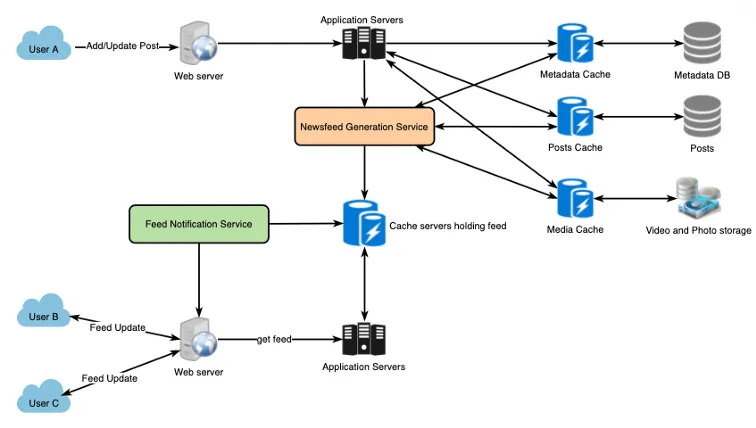
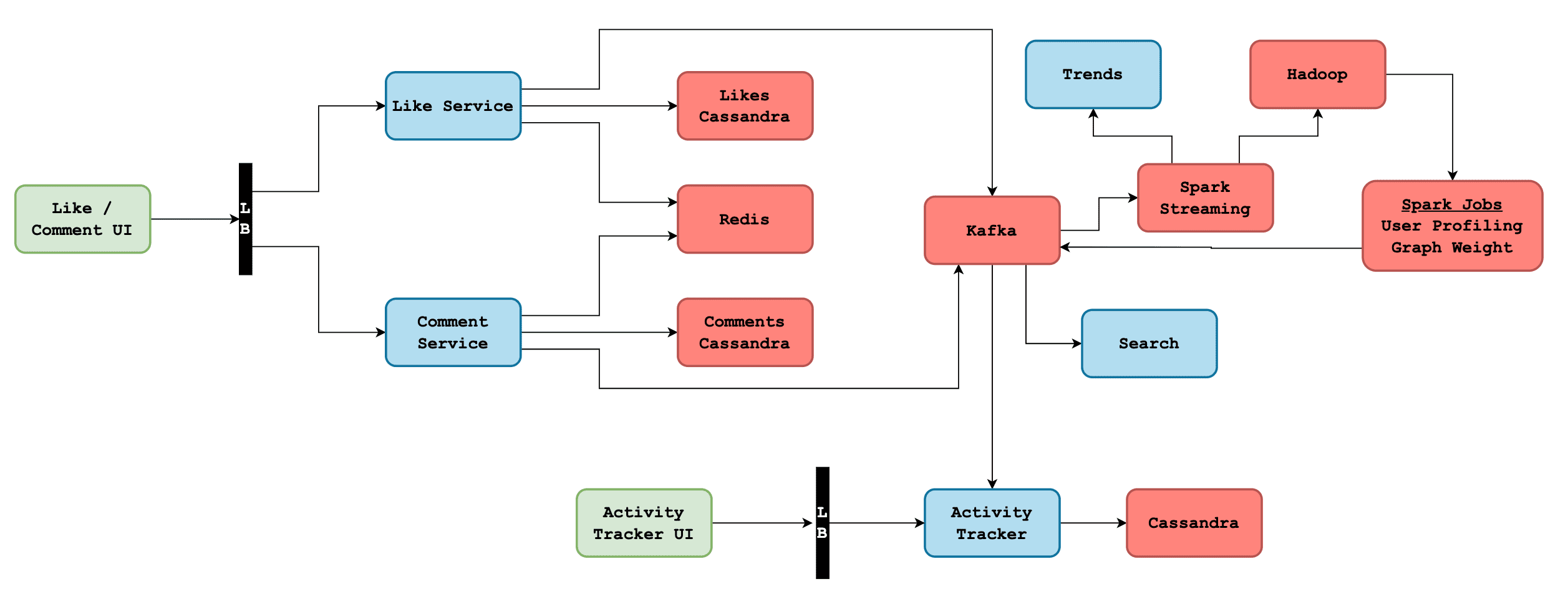
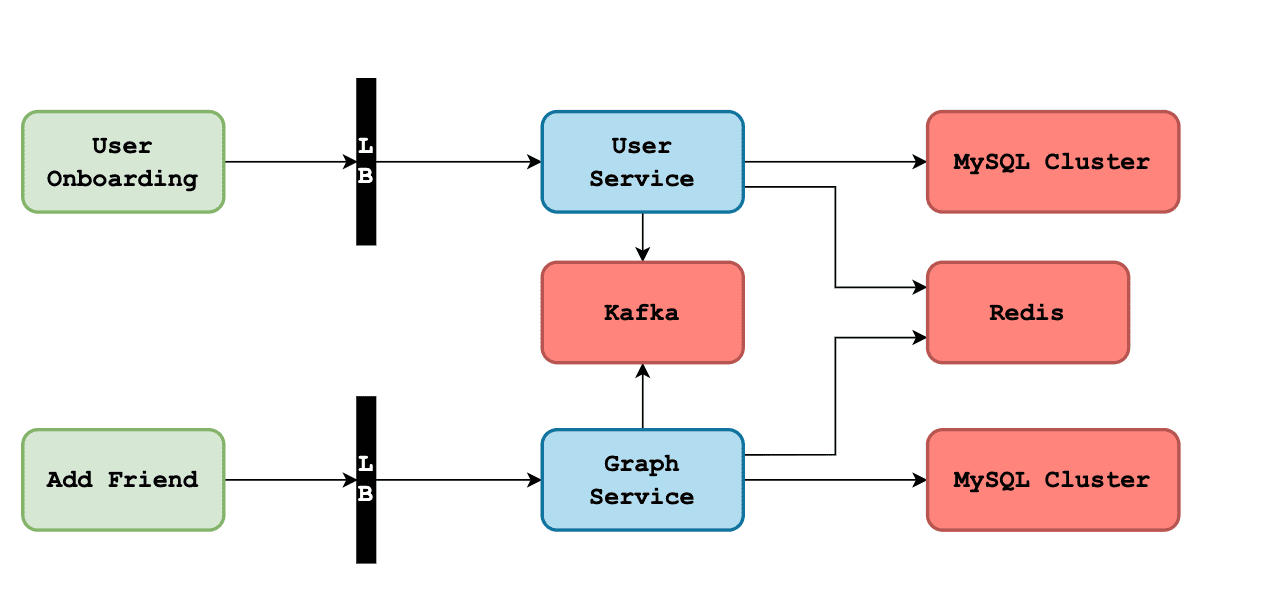
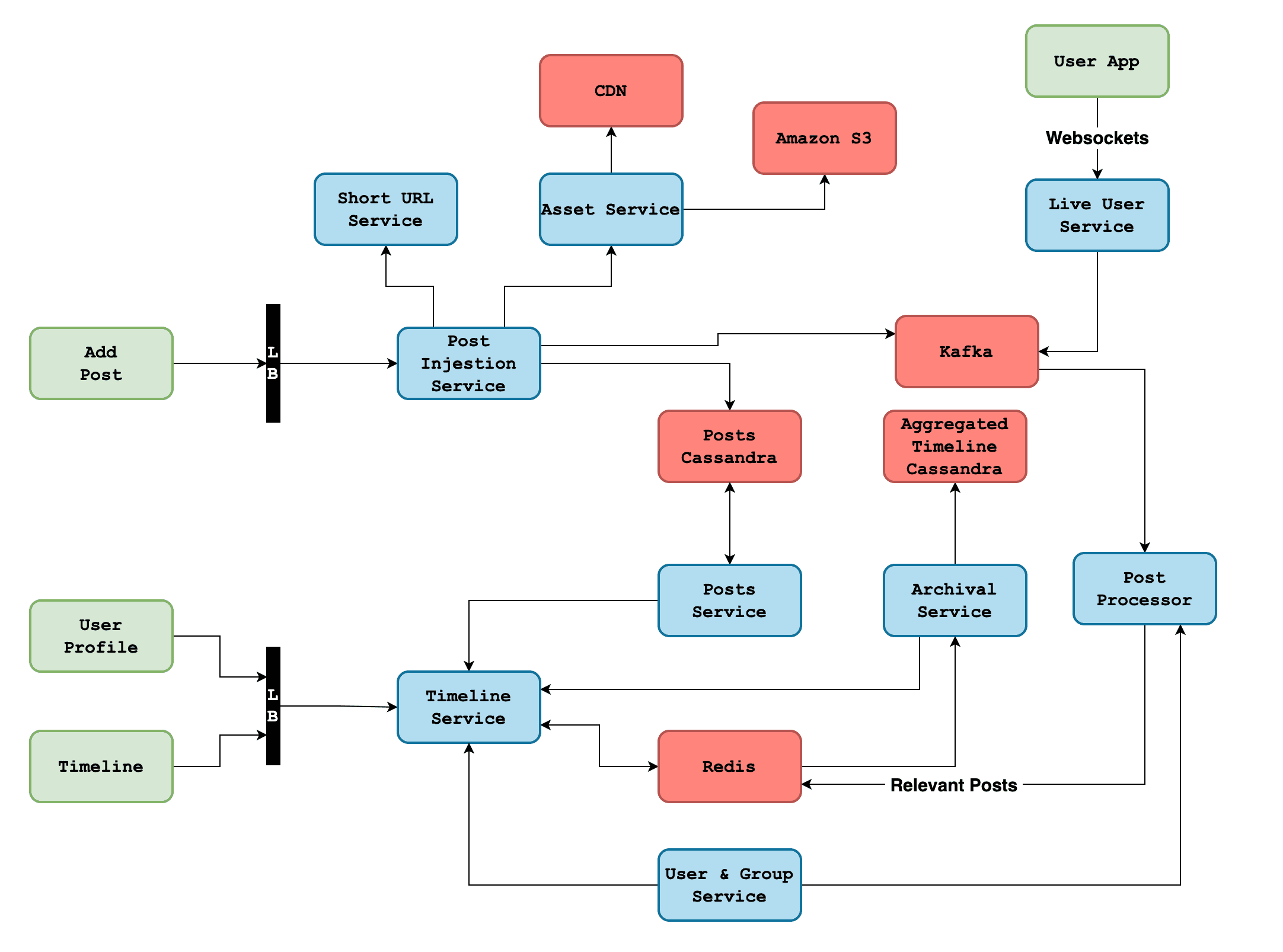
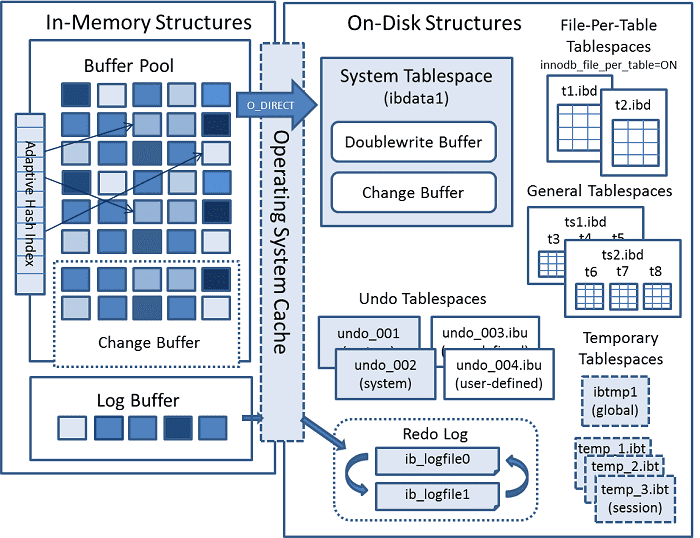
2. Netflix: Netflix, the popular streaming service, relies on a highly robust backend architecture to deliver a seamless streaming experience to millions of users worldwide. Their backend uses a cloud-based infrastructure of Amazon Web Services (AWS). Netflix uses AWS services like Amazon S3 for storage, Amazon CloudFront for content delivery, and Amazon DynamoDB to manage user preferences and recommendations.
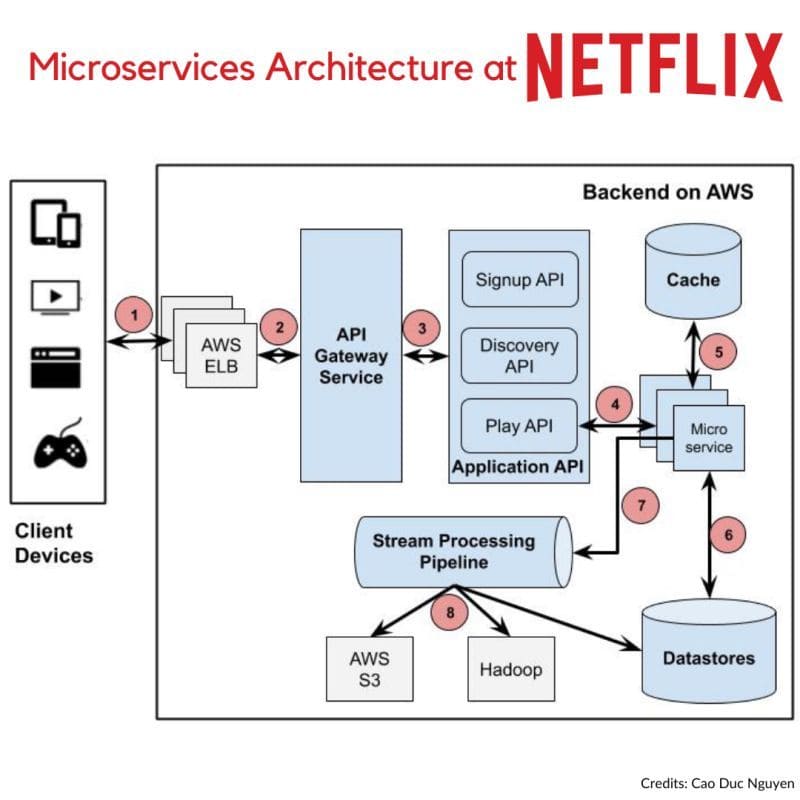 3. Uber: Uber’s backend is a prime example of a robust and scalable system. With millions of daily transactions and real-time data processing, Uber’s backend needs to handle a massive volume of requests efficiently, ensuring that the app remains accessible and always responsive. Their backend is built on a combination of microservices and uses technologies like Node.js for real-time data processing and PostgreSQL for data storage.
3. Uber: Uber’s backend is a prime example of a robust and scalable system. With millions of daily transactions and real-time data processing, Uber’s backend needs to handle a massive volume of requests efficiently, ensuring that the app remains accessible and always responsive. Their backend is built on a combination of microservices and uses technologies like Node.js for real-time data processing and PostgreSQL for data storage.
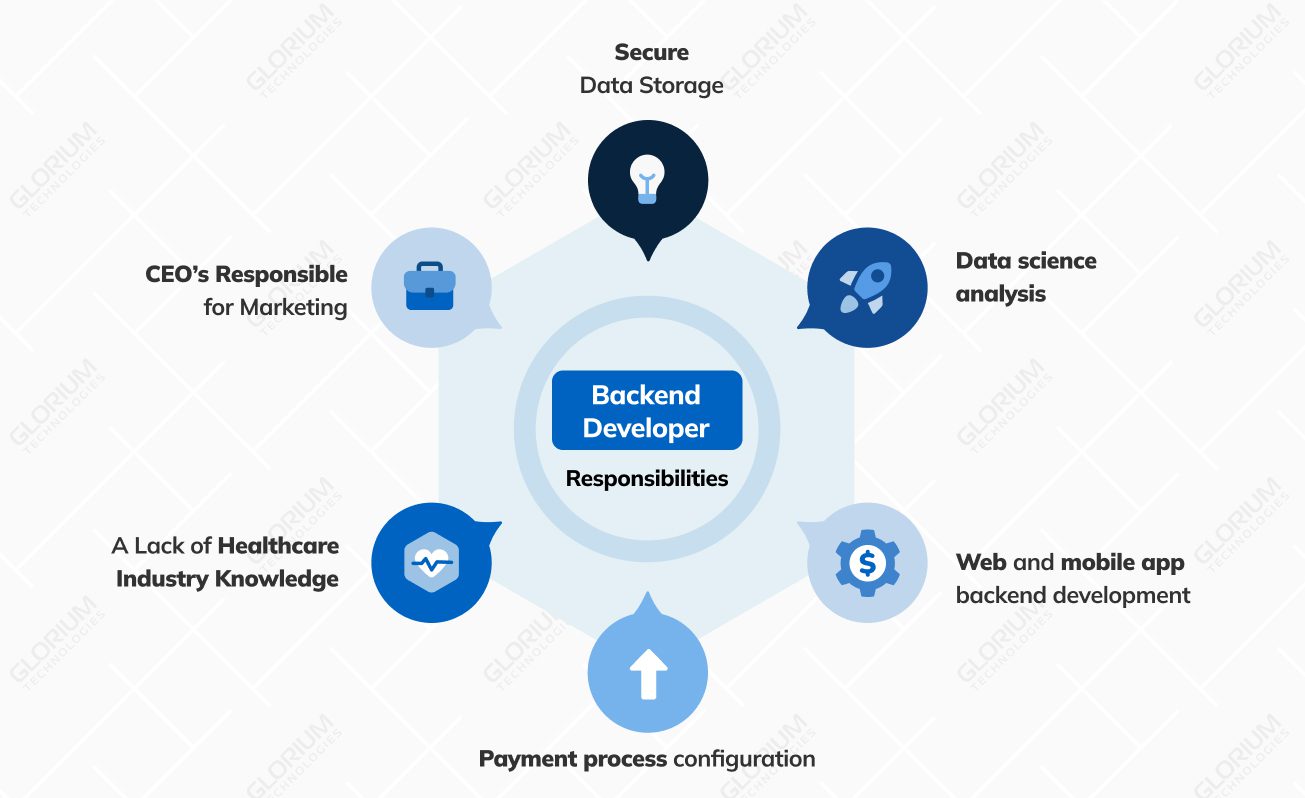
4. Airbnb: Airbnb, the online marketplace for lodging and travel experiences, relies on a robust backend to manage user bookings, search queries, and messaging. Their backend uses a service-oriented architecture (SOA) to achieve better separation of concerns and scalability. Airbnb utilizes technologies like Ruby on Rails for web services and Cassandra for data storage.
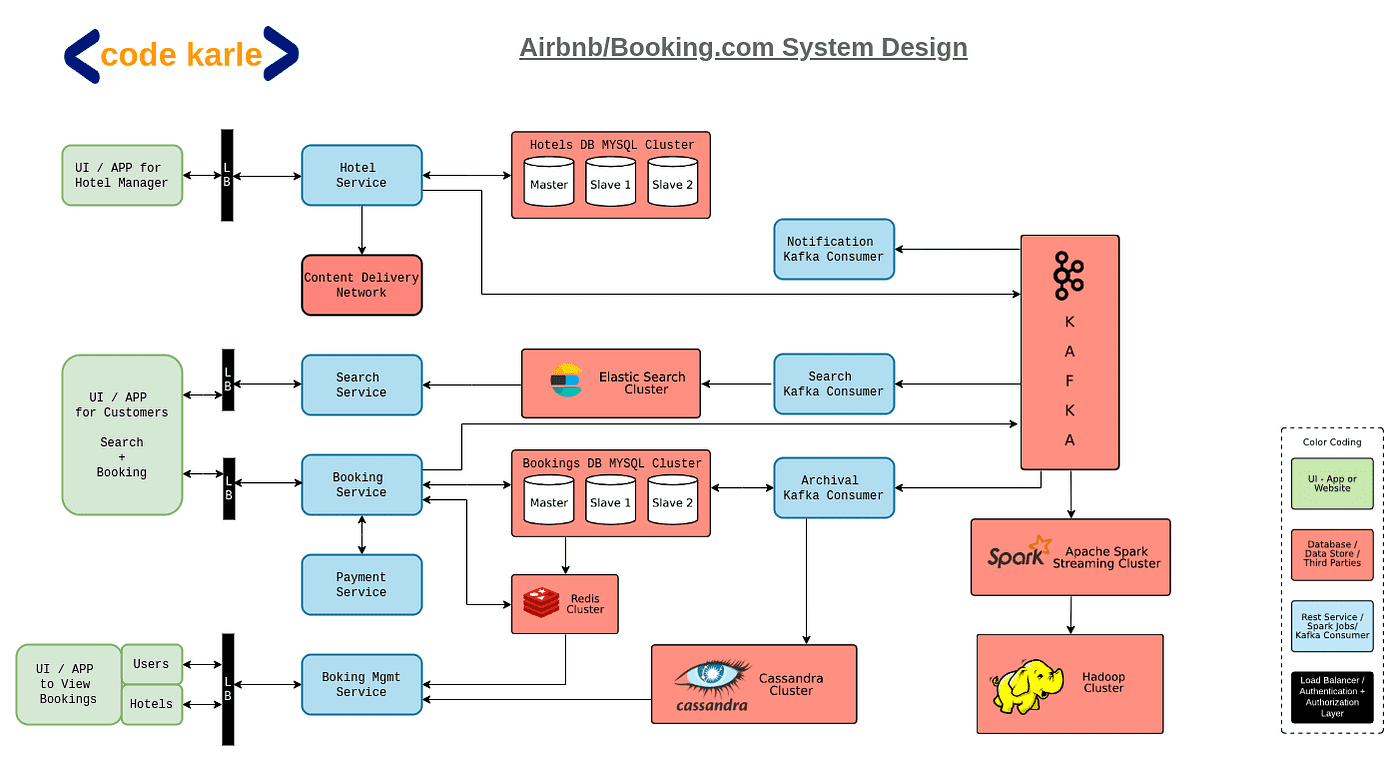 5. Slack: Slack, the famous team collaboration platform, has a strong backend architecture to support real-time messaging and file sharing for millions of users. Their backend is built on a combination of custom-developed services and cloud-based technologies and optimized for performance and reliability. Slack’s backend uses technologies like Python for message handling, Amazon EC2 for hosting, and Amazon S3 for file storage.
5. Slack: Slack, the famous team collaboration platform, has a strong backend architecture to support real-time messaging and file sharing for millions of users. Their backend is built on a combination of custom-developed services and cloud-based technologies and optimized for performance and reliability. Slack’s backend uses technologies like Python for message handling, Amazon EC2 for hosting, and Amazon S3 for file storage.
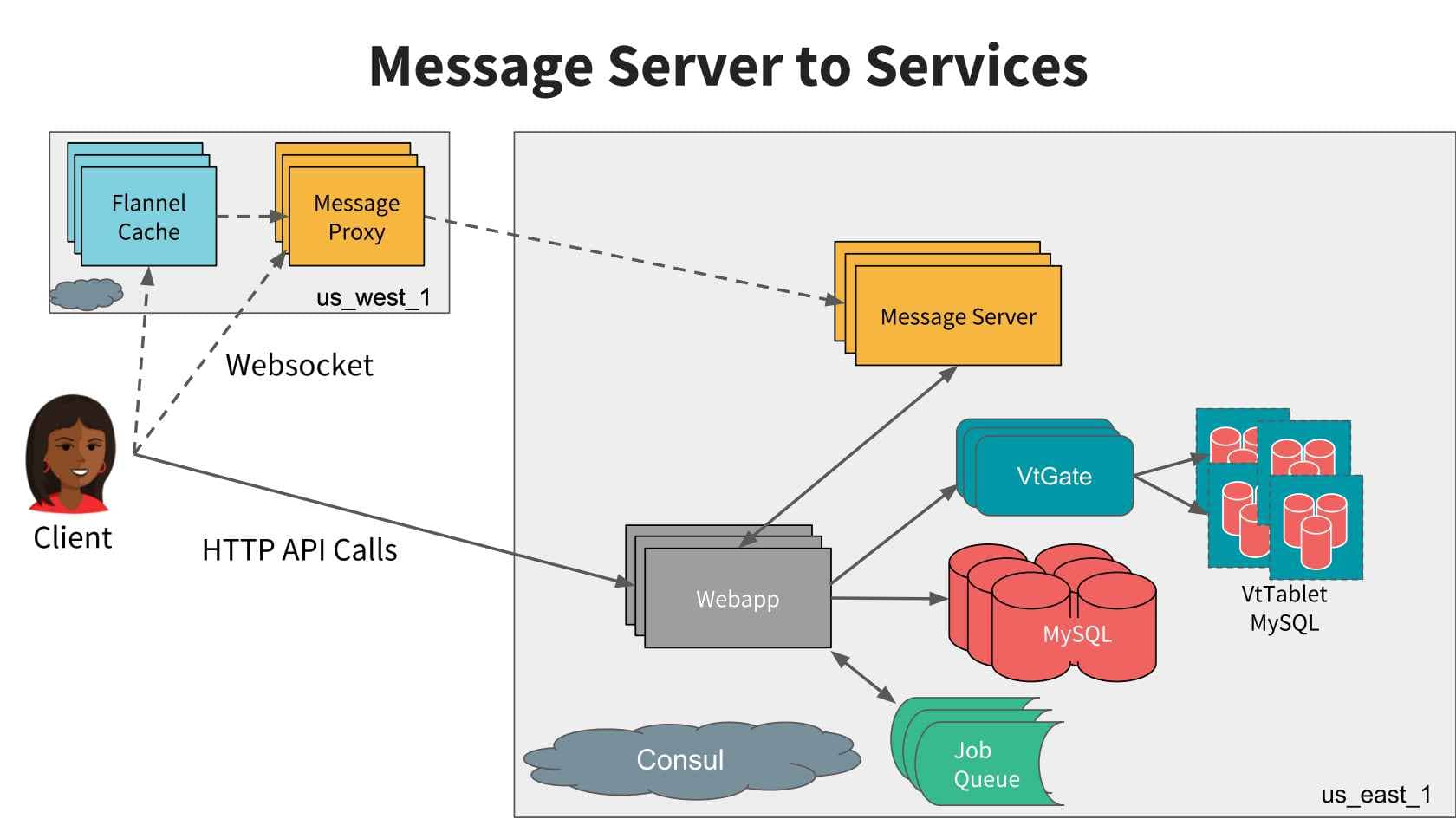
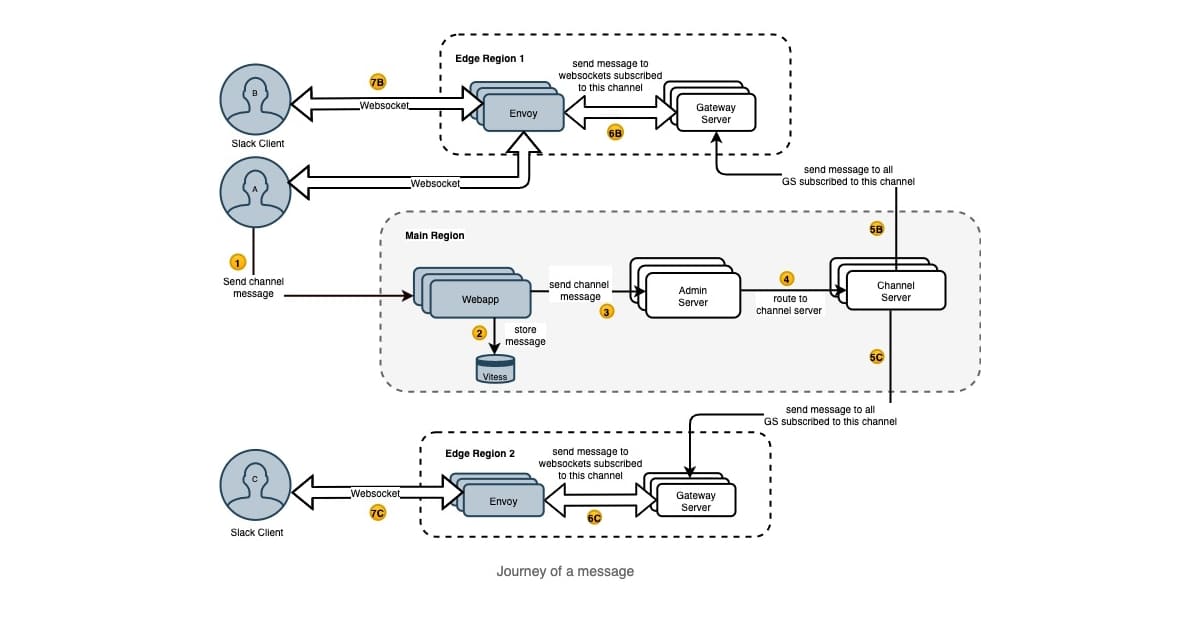
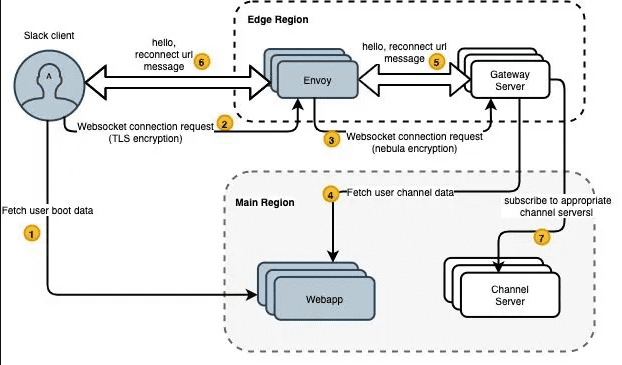
These examples illustrate how successful companies prioritize backend development to deliver high-performing, scalable, and secure applications.
By employing the best developers who leverage custom backend solutions and up-to-date backend technology stack, these brands ensure a seamless user experience and maintain a competitive edge in their respective industries.
Finding skilled and experienced backend developers is the first and foremost requirement for building an efficient mobile app backend.
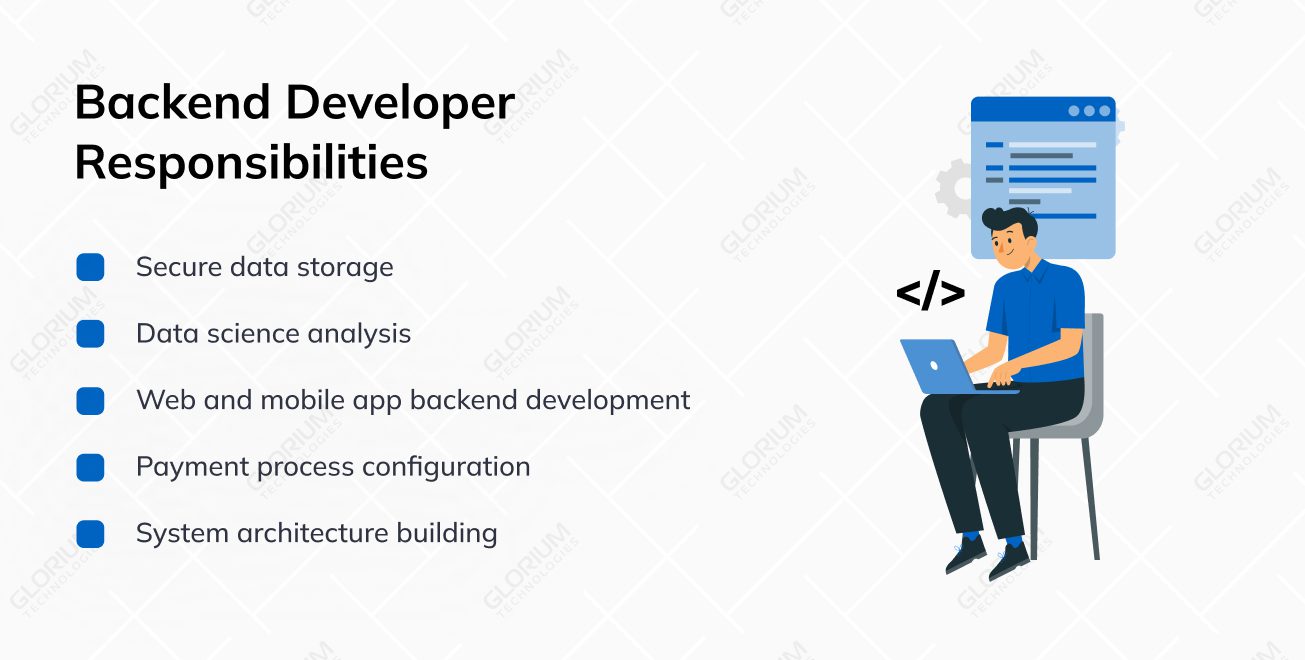
Though they are in great demand, hiring excellent specialists with the right approach is possible. Companies can leverage multiple recruitment channels, utilizing networking and employee referrals, engaging with developer communities, and creating an appealing job description.
Here are some top places to hire backend developers:
The first step to hire mobile developer, whether frontend or backend, is to create a meticulous job description.
Next, it’s essential to thoroughly review candidates’ resumes, portfolios, and past projects. Conduct technical interviews to assess their skills, problem-solving abilities, and cultural fit with your team. And while running the hiring process, consider involving other team members or tech experts to ensure a well-rounded evaluation of the candidates.
By exploring multiple channels and taking a comprehensive approach to recruitment, you will find the right app development professionals who will contribute to the success of your mobile app project.
Creating a mobile app’s backend is essential in producing high-performance and dependable mobile applications. Experienced developers can select the appropriate tools and technologies to construct scalable, secure, and user-friendly backends that allow mobile backend solutions to serve their purpose, no matter how much the app scales or the backend technology stack advances.
The mobile app environment is constantly shifting, which means that effective backend development will continue to be a defining component in determining the quality of the user experience and the overall success of an app. Yet, following best practices and having an orderly development process will always be essential for launching a successful app.
Frontend development focuses on creating the user interface and user experience of the app that users interact with directly. Backend mobile app development deals with the server-side components that support the app’s functionalities and data processing.
BaaS platforms are cloud-based services that provide pre-built backend functionalities, APIs, and infrastructure. These mobile app backend development services allow developers to streamline mobile app backend development by utilizing ready-made components, which can accelerate the process, reduce costs, and simplify maintenance.
Backend development is crucial as it enables core functionalities of a mobile app, such as user authentication, data storage, real-time updates, and seamless interactions. A well-structured backend mobile app development ensures a smooth user experience, data security, and efficient communication between the app and the server.
Challenges include ensuring data security, scalability, compatibility across devices and operating systems and handling real-time interactions efficiently. Balancing these aspects of the backend for mobile app development while delivering a seamless user experience can be complex.
Selecting a backend technology stack involves considering your app’s requirements, preferred programming languages, database choices, scalability needs, and available developer expertise. Research different options and assess how well they align with your project’s goals.
Yes, you can use the same mobile app backend development for iOS and Android apps, especially if you opt for cross-platform development frameworks like React Native or Flutter. However, platform-specific considerations may arise, requiring minor adjustments in certain cases.
